Your cart is currently empty!
Blog
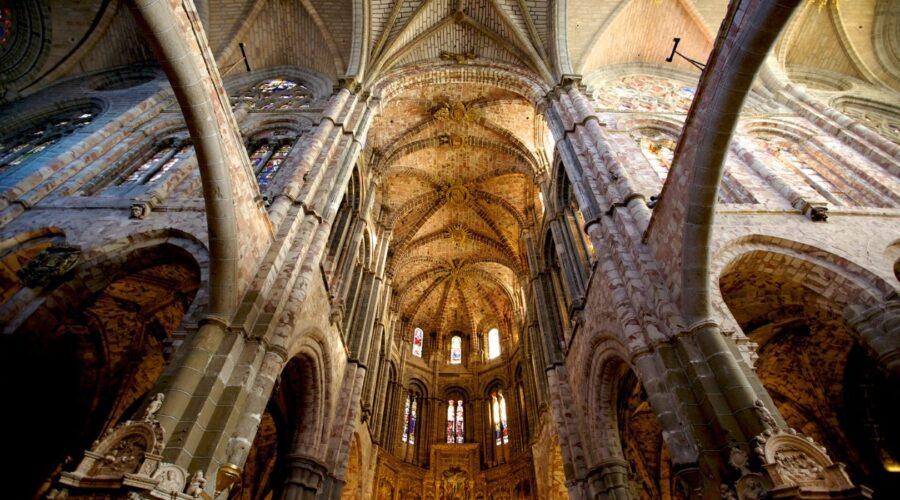
Pastor Rick Warren: A Spiritual Leader and Visionary
Introduction
Rick Warren is a world-renowned pastor, author, and speaker. He is the founding pastor of Saddleback Church in Lake Forest, California, one of the largest and most influential churches in the United States. Warren is also known for his bestselling book, “The Purpose Driven Life,” which has sold over 35 million copies worldwide.
Early Life and Education
Rick Warren was born on January 28, 1954, in San Jose, California. He grew up in a Christian family and attended a local Baptist church. Warren earned a bachelor’s degree in psychology from Hardin-Simmons University and a master’s degree in divinity from Southwestern Baptist Theological Seminary.
Ministry Career
Warren founded Saddleback Church in 1980 with a small group of people meeting in his home. Over the years, the church has grown to become a megachurch with over 30,000 members. Warren is known for his practical and biblical teachings, which emphasize the importance of serving others and living a purpose-driven life.
The Purpose Driven Life
In 2002, Warren published “The Purpose Driven Life,” a book that outlines a step-by-step plan for discovering and fulfilling God’s purpose for one’s life. The book became an instant bestseller and has been translated into over 90 languages.
PEACE Plan
Warren is also the founder of the PEACE Plan, a global initiative to promote peace and reconciliation. The plan has five focus areas:
* Promote reconciliation
* Equip transformational leaders
* Assist the poor
* Care for the sick
* Educate the next generationWritings and Other Ministries
In addition to “The Purpose Driven Life,” Warren has written several other books, including “The Daniel Plan,” “The Purpose Driven Church,” and “The Circle Maker.” He also hosts a daily radio program called “Daily Hope” and has established several organizations, including the Global PEACE Foundation and the Rick Warren Institute.
Personal Life
Rick Warren is married to Kay, and they have three children. The Warrens reside in Southern California.
Key Beliefs and Principles
* God is the Creator and sustainer of all things.
* Jesus Christ is the Son of God and the only way to salvation.
* The Holy Spirit is the guide and comforter of believers.
* The Bible is the inspired and authoritative Word of God.
* The purpose of life is to know God, live for his glory, and make a difference in the world.Impact and Legacy
Rick Warren is one of the most influential Christian leaders of our time. His teachings have inspired and encouraged millions of people around the world. He is known for his practical and biblical approach to ministry and his passion for helping others discover their purpose and live a meaningful life.
Additional Resources
* [Saddleback Church website](https://www.saddleback.com/)
* [Rick Warren’s blog](https://pastors.com/rick-warren-blog/)
* [Rick Warren’s Twitter account](https://twitter.com/RickWarren)
* [Rick Warren’s Instagram account](https://www.instagram.com/rickwarren/)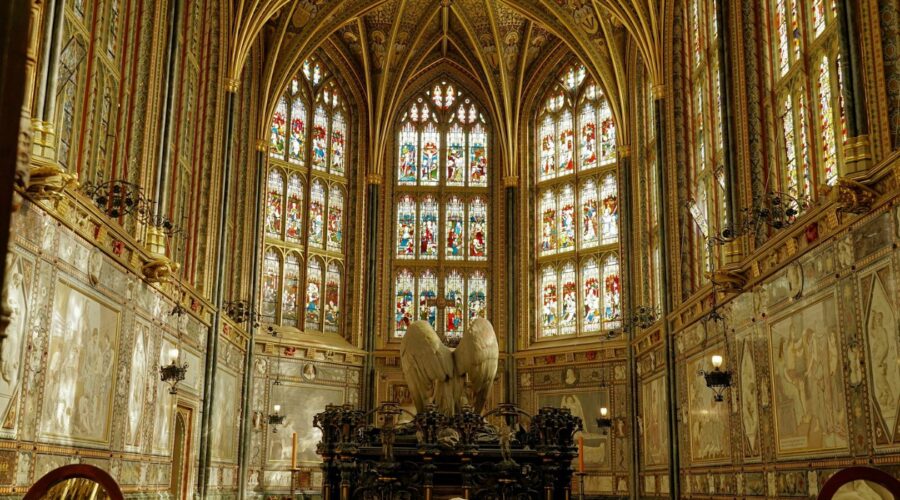
Methodism: A Comprehensive Guide to Beliefs, Practices, and History
Introduction
Methodism is a Protestant Christian movement that emerged in the 18th century in England. Founded by John Wesley, Methodism has since spread to various parts of the world and developed into several denominations, each with its unique characteristics and emphases. This guide aims to provide an overview of the key aspects of Methodism, including its beliefs, practices, and historical development.
Beliefs
Methodists adhere to the core tenets of Christianity, including:
* **Belief in the Trinity:** The Father, Son, and Holy Spirit as one God.
* **The authority of the Bible:** As the inspired Word of God.
* ** Justification by faith:** Salvation through the grace of God, received through faith in Jesus Christ.
* ** Sanctification:** The process of growing in holiness and becoming more like Christ.
* ** The Second Coming of Christ:** The belief that Jesus will return to establish a just and eternal kingdom.Distinctive Methodist Beliefs:
* **Emphasis on experiential religion:** Methodists believe in the importance of personal experience of God’s grace and forgiveness.
* **Arminianism:** Methodists believe in the free will of individuals and that salvation is not predestined.Practices
Methodist practices are designed to foster spiritual growth and community:
* **Class Meetings:** Small groups where members gather for prayer, Bible study, and mutual support.
* **Prayer Meetings:** Regular gatherings for corporate prayer.
* **Love Feasts:** Sacramental meals where members share bread and wine in remembrance of Christ’s sacrifice.
* **Sacraments:** Baptism and Holy Communion are recognized as sacraments, outward signs of inward grace.Other Methodist Practices:
* **Circuit Riding:** Preachers traveled on horseback to preach in remote areas and establish new congregations.
* **Lay Leadership:** Methodists value lay involvement in church leadership and ministry.History
Origins and Early Development:
* 1729:** John Wesley and Charles Wesley underwent a profound spiritual experience known as the “Aldersgate Experience.”
* 1739:** Methodists began to organize into “societies” with rules and accountability structures.
* 1784:** The Methodist Church in America was established after the American Revolution.Great Revivals and Expansion:
* 18th and 19th centuries:** Methodism experienced significant revivals and growth, spreading throughout England and North America.
* **Missionary Work:** Methodists established missions in various parts of the world, including Africa, Asia, and the Pacific Islands.Denominational Developments:
Over time, Methodism has developed into several denominations, each with its own unique identity:
* The United Methodist Church:** The largest Methodist denomination, formed in 1968 through the union of several Methodist bodies.
* The Wesleyan Church:** Emphasizes traditional Methodist beliefs and practices.
* **The African Methodist Episcopal Church:** Founded in the 19th century, it plays a significant role in the African American community.Conclusion
Methodism is a diverse and dynamic Christian movement with a rich history and theological heritage. Its emphasis on experiential religion, Arminianism, and community practices has shaped its distinctive identity. Today, Methodists continue to spread their message of salvation by grace and serve as a force for good in the world.
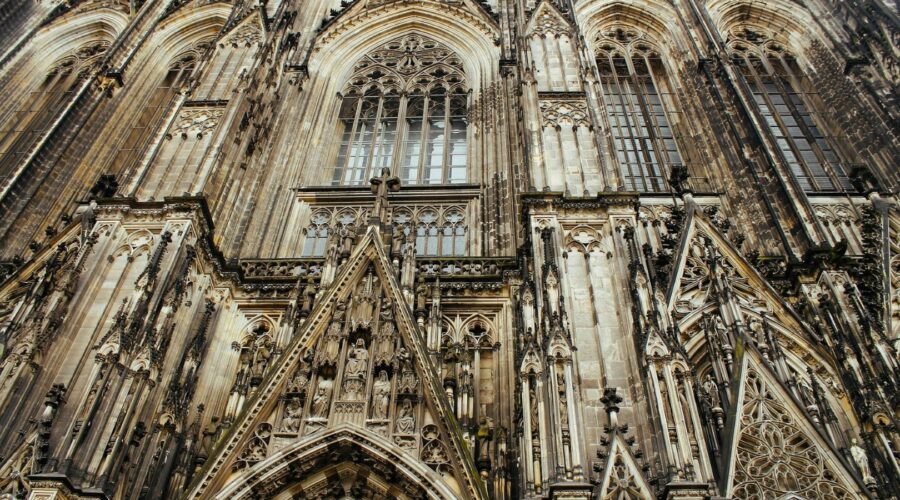
Delve into the National Catholic Register: A Comprehensive Guide
Understanding the National Catholic Register: Its Purpose and Reach
The National Catholic Register (NCR) serves as the official newspaper for the Catholic Church in the United States. Established in 1963, its mission is:
- To inform Catholics about the Church’s teachings and activities.
- To provide news and commentary on events affecting the Catholic community.
- To promote a culture that embraces Catholic values.
With a readership of over one million, the NCR reaches a wide audience, including:
- Parish members
- Religious professionals
- Catholic school administrators
- Church leaders
li>Individuals interested in Catholic news and perspectives
Navigating the NCR: Paper, Digital, and Social Media
Paper Edition
The NCR’s paper edition is published weekly and distributed in parishes throughout the country.
Benefits of the paper edition:
- Tangible and easy to read in a physical format.
- Durable and suitable for archival purposes.
- Provides a sense of community by sharing a physical copy with others in the parish.
Digital Edition
The NCR also offers a digital edition доступен по адресу ncregister.com/digital-edition. This subscription-based service provides:
- Instant access to the latest issue.
- An archive of past issues.
- Exclusive online content.
- Personalized reading experience on multiple devices.
Social Media and Website
The NCR actively engages with its audience through social media platforms like Facebook, Twitter, and Instagram. The NCR website (ncregister.com) offers:
- Breaking news updates.
- In-depth articles and commentary.
- Multimedia content (e.g., videos, podcasts).
- Access to the digital edition.
Key Features and Content of the NCR
- News Coverage: Comprehensive reporting on significant events and issues related to the Catholic Church.
- Commentary and Opinions: Thought-provoking perspectives from leading theologians, scholars, and Catholic leaders.
- Vatican News: Updates and insights from the Vatican and Pope Francis.
- Diocesan News: Coverage of local events and initiatives from dioceses across the US.
- Arts and Culture: Reviews and analysis of books, films, music, and other cultural developments relevant to Catholic life.
- Faith Formation: Articles, devotions, and resources for spiritual growth and reflection.
Benefits of Subscribing to the NCR
- Stay Informed: Access to the latest Catholic news and perspectives.
- Deepen Your Faith: Explore faith-based articles, devotions, and spiritual guidance.
- Be Part of a Community: Connect with fellow Catholics through parish distribution or social media engagement.
- Support Catholic Journalism: Help maintain a strong and independent voice for the Catholic Church in the US.
How to Subscribe to the NCR
There are two ways to subscribe to the NCR:
- Paper Edition: Contact your local parish or visit ncregister.com/subscribe/print.
- Digital Edition: Visit ncregister.com/subscribe/digital.
Additional Resources
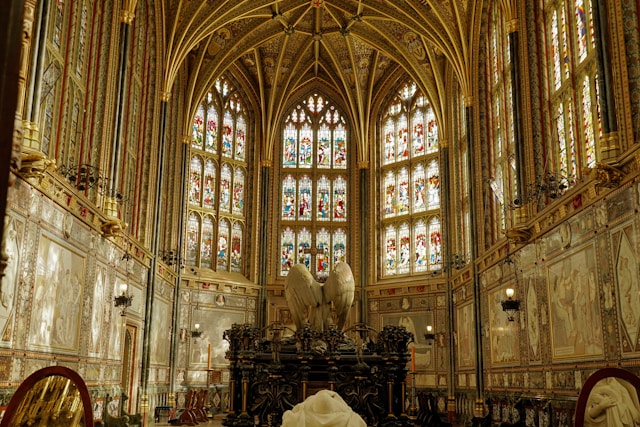
Discover the Power of Faith in the Bible: A Comprehensive Guide
Faith is the cornerstone of Christian living, shaping our beliefs, guiding our actions, and connecting us to God. The Bible, as the foundational text of Christianity, provides invaluable insights into the nature, importance, and impact of faith.
What is Faith?
According to Hebrews 11:1, faith is “the assurance of things hoped for, the conviction of things not seen.” It involves a deep belief in the character and promises of God, even when circumstances may suggest otherwise.
Characteristics of Faith
- Trust: Faith places absolute trust in God’s wisdom, power, and love.
- Expectation: Faith anticipates God’s fulfillment of His promises.
- Conviction: Faith is a conviction that God is who He says He is and will do what He says He will do.
- Action: Faith is not merely a mental assent but translates into practical actions that align with God’s will.
The Importance of Faith
Throughout the Bible, faith is portrayed as essential for:
Salvation
Ephesians 2:8-9 states that salvation is a gift from God, received through faith in Jesus Christ alone.
Spiritual Growth
Hebrews 11:6 declares that “without faith it is impossible to please God,” emphasizing its importance in our relationship with Him.
Overcoming Challenges
Faith empowers us to endure trials, trust in God’s faithfulness, and emerge victorious (1 Corinthians 10:13).
How to Develop Faith
Study the Bible
Regularly engage with God’s Word to deepen your understanding of His character and promises.
Pray
Prayer fosters a personal connection with God, strengthening your faith and fostering trust.
Fellowship with Believers
Surround yourself with other believers who encourage and support your faith journey.
Apply Faith in Daily Life
Put your faith into practice by making choices that reflect your belief in God’s goodness and providence.
Examples of Faith in the Bible
The Bible is replete with inspiring examples of faith:
Table 1: Examples of Faith in the Bible Character Act of Faith Outcome Abraham Believed God’s promise of a son in his old age Birth of Isaac (Genesis 15:6) Moses Led the Israelites out of Egypt despite overwhelming obstacles Crossing of the Red Sea (Exodus 14) David Confronted Goliath with unwavering faith in God Victory over Goliath (1 Samuel 17) Daniel Remained faithful to God even in the face of death God’s protection in the lion’s den (Daniel 6) Peter Stepped out of the boat and walked on water Experience of God’s supernatural power (Matthew 14:28-29) Growing in Faith
Faith is not static but requires continuous nurturing.
Challenges to Faith
Various challenges can test our faith, including:
- Suffering and Adversity
- Doubt and Unbelief
- Temptations and Sin
Overcoming Challenges
Overcoming these challenges requires:
- Perseverance
- Prayer
- Support from Others
- Focus on God’s Faithfulness
Conclusion
Faith is the bedrock of our Christian lives, connecting us to God, empowering us to overcome challenges, and leading us toward eternal life. By understanding the nature of faith, developing it through daily practice, and embracing its power, we can experience the transformative impact of God’s grace and the unwavering hope that faith provides.
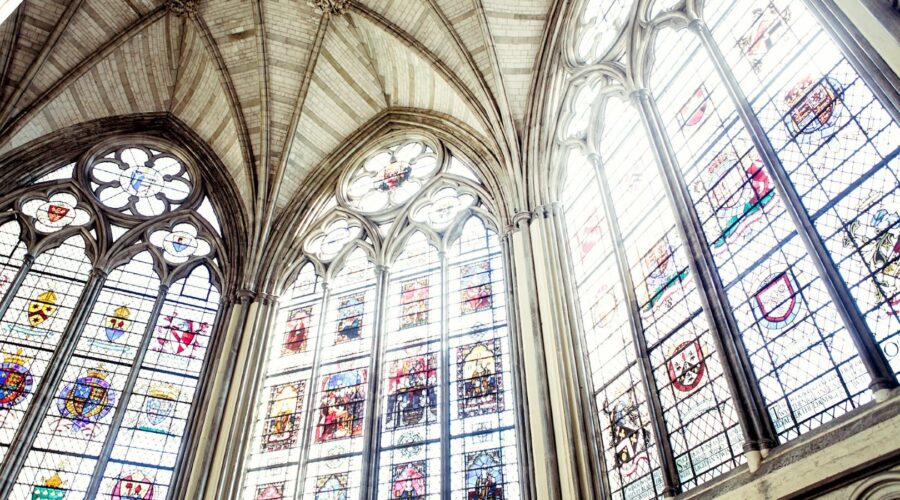
First Presbyterian Church: A Comprehensive Guide
Introduction
The First Presbyterian Church holds a significant place in the annals of Christianity, embodying a rich history, unwavering faith, and a commitment to serving its congregation and community. As the first Presbyterian congregation established in the United States, it has played a pivotal role in shaping the religious landscape of the nation. This comprehensive guide delves into the history, beliefs, mission, and various aspects of the First Presbyterian Church, providing valuable insights into its impact and enduring legacy.
Historical Context
Foundation and Early Years
The First Presbyterian Church was established in Philadelphia, Pennsylvania, in 1697 by a group of Scottish Presbyterians led by the Reverend George Keith. These settlers sought to establish a congregation that adhered to the beliefs and practices of the Presbyterian Church of Scotland. The church initially met in a private home before constructing its first building in 1704 on Arch Street.
Growth and Expansion
In the 18th century, the church experienced significant growth and expansion. Under the leadership of prominent pastors such as Gilbert Tennent and John Witherspoon, the congregation expanded its reach and influence. Tennent’s fiery sermons contributed to the Great Awakening, a religious revival that swept through the American colonies.
Revolutionary Era
During the American Revolution, the First Presbyterian Church played a pivotal role. John Witherspoon, a signer of the Declaration of Independence and a delegate to the Continental Congress, used his oratorical skills to advocate for American independence. The church also served as a meeting place for the Continental Congress.
Beliefs and Practices
Presbyterian Theology
The First Presbyterian Church adheres to the Westminster Confession of Faith and the Westminster Catechisms, which define the core beliefs of Presbyterianism. These documents emphasize the sovereignty of God, the depravity of humanity, and the atoning sacrifice of Jesus Christ. The church also embraces the principle of representative government, with elders and deacons elected by the congregation to oversee its affairs.
Worship Services
Worship services at the First Presbyterian Church are characterized by a blend of traditional and contemporary elements. The liturgy includes hymns, prayers, Scripture readings, and sermons. The church also incorporates multimedia elements and contemporary worship songs into its services.
Sacraments
The church observes two sacraments: baptism and the Lord’s Supper. Baptism is administered to infants and adults as a sign of God’s grace and forgiveness. The Lord’s Supper, also known as communion, is a remembrance of Jesus’ sacrifice and a symbol of unity among believers.
Mission and Outreach
Community Involvement
The First Presbyterian Church is deeply committed to serving its community. It operates a variety of outreach programs, including a food pantry, a homeless shelter, and a job training program. The church also partners with other organizations to address social issues such as poverty, homelessness, and addiction.
Global Missions
The church supports mission work around the world through partnerships with Presbyterian missionaries and organizations. These efforts focus on evangelism, education, and healthcare, seeking to spread the gospel and make a positive impact on communities in need.
Architecture and Historical Significance
The First Presbyterian Church is housed in a beautiful and historically significant building at 201 South Third Street in Philadelphia. The current structure, completed in 1855, is an example of Gothic Revival architecture and is listed on the National Register of Historic Places.
Notable features of the building include its high vaulted ceilings, stained glass windows, and intricate woodwork. The church’s sanctuary is particularly impressive, with its grand pulpit and elaborate organ. The building has undergone several renovations over the years, but it retains its original charm and grandeur.
Conclusion
The First Presbyterian Church stands as a testament to the enduring power of faith and the transformative impact of the Christian message. Throughout its long history, the church has remained a beacon of hope and a catalyst for positive change in Philadelphia and beyond. Its commitment to biblical teaching, community service, and global missions continues to inspire and motivate generations of believers.
As the first Presbyterian congregation established in the United States, the First Presbyterian Church holds a special place in the hearts of Presbyterians and Christians alike. Its legacy of faith, service, and architectural beauty is a source of pride for the congregation and a valuable asset to the city of Philadelphia.
FAQs
Q: What is the address of the First Presbyterian Church?
A: 201 South Third Street, Philadelphia, PA 19106
Q: When were the current building and sanctuary completed?
A: 1855
Q: What are the core beliefs of the Presbyterian Church?
A: Sovereignty of God, depravity of humanity, atoning sacrifice of Jesus Christ
Q: What types of outreach programs does the church operate?
A: Food pantry, homeless shelter, job training program
Q: Is the church building listed on the National Register of Historic Places?
A: Yes
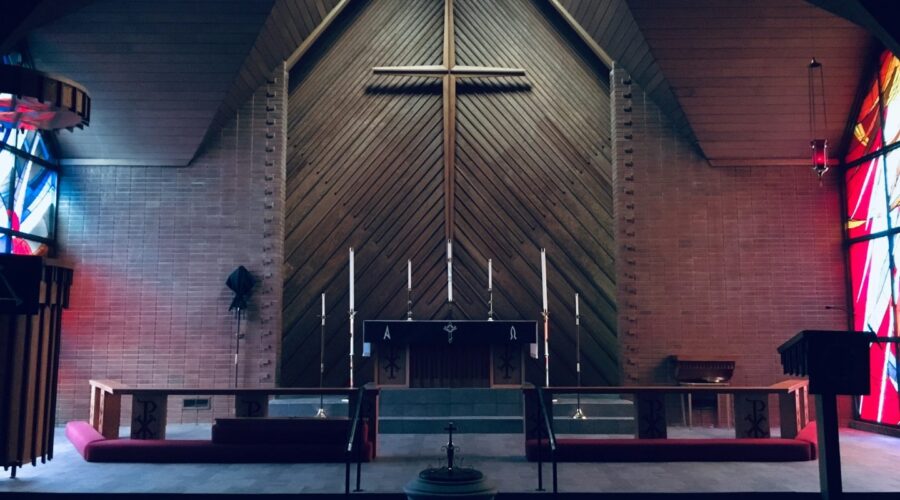
Discover the Roman Catholic Church Near You: A Comprehensive Guide
Introduction
The Roman Catholic Church is one of the largest and most influential Christian denominations in the world. With over 1.3 billion members, the Church is present in almost every country and offers a wide range of spiritual, educational, and social services.
If you’re looking for a Roman Catholic church near you, there are a few things you can do to find one. You can use online directories, search for local listings, or ask friends and family for recommendations.
Online Directories
There are several online directories that can help you find a Roman Catholic church near you. Some of the most popular directories include:
These directories provide information on churches all over the world, including their addresses, phone numbers, and websites. You can search for churches by location, diocese, or parish name.
Local Listings
You can also find Roman Catholic churches near you by searching for local listings. This can be done through online search engines, local newspapers, or phone directories.
When searching for local listings, be sure to use specific keywords, such as “Roman Catholic Church” or “Catholic parish.” You can also narrow your search by location, such as “Roman Catholic Church in [your city].”
Ask Friends and Family
If you have friends or family who are Catholic, they may be able to recommend a church near you. They can provide you with first-hand information about the church, such as its size, location, and clergy.
What to Look for in a Roman Catholic Church
When choosing a Roman Catholic church, there are a few things you may want to consider:
Mass Times
Mass is the central sacrament of the Catholic Church. It is typically celebrated on Sundays and weekdays at various times.
When choosing a church, it’s important to find one that offers Mass times that fit your schedule. You can find Mass times by visiting the church’s website or calling the parish office.
Location
The location of the church is also an important factor to consider. You may want to choose a church that is close to your home or work.
If you have young children, you may want to consider a church that has a children’s program or daycare.
Community
The community of a church is just as important as its location and Mass times. You want to find a church where you feel welcome and supported.
You can get a sense of the community of a church by attending Mass, visiting the church’s website, or talking to the clergy and staff.
Next Steps
Once you’ve found a few Roman Catholic churches near you, the next step is to visit them and see which one is the best fit for you.
When you visit a church, be sure to pay attention to the following:
- The atmosphere of the church
- The friendliness of the people
- The quality of the homily
- The overall feeling you get from the church
After you’ve visited a few churches, you can decide which one you want to join. Joining a church is a big decision, so take your time and choose carefully.
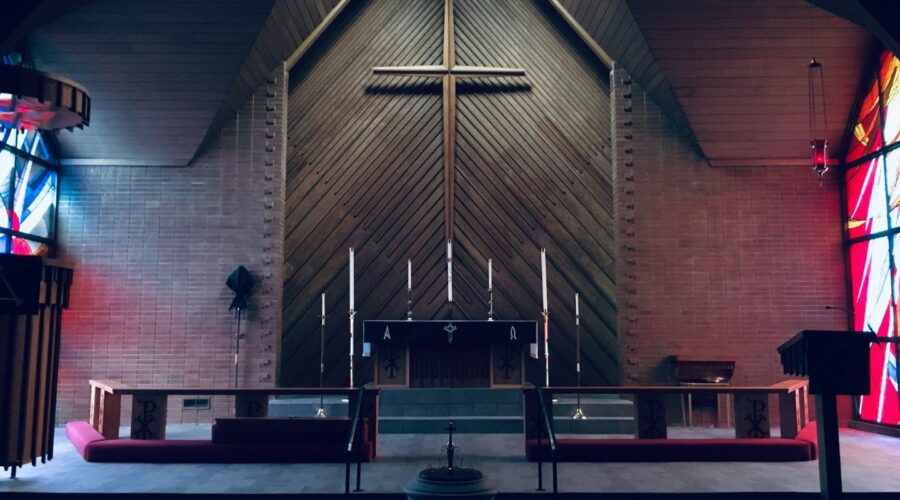
Unlocking the World of Pentecostal Churches: A Comprehensive Guide
Introduction
Pentecostalism, a vibrant branch of Christianity characterized by its charismatic practices and emphasis on the Holy Spirit, has emerged as a significant force in the global religious landscape. Pentecostal churches, the central hubs of this movement, have spread across nations, captivating millions of followers with their unique beliefs, worship styles, and spiritual experiences. This comprehensive guide delves into the multifaceted world of Pentecostal churches, illuminating their origins, beliefs, practices, and impact on society.
Origins and History
The Pentecostal movement traces its roots to the turn of the 20th century in the small town of Azusa Street, Los Angeles. On January 1, 1901, a revival meeting led by African-American minister William J. Seymour experienced an extraordinary outpouring of the Holy Spirit. Participants spoke in tongues, prophesied, and exhibited other spiritual gifts, marking the birth of the modern Pentecostal movement.
Over the decades, Pentecostalism spread rapidly throughout the United States and beyond, finding fertile ground in urban centers and among marginalized communities. Today, Pentecostal churches can be found in nearly every country, with an estimated global following of over 600 million.
Beliefs and Doctrines
Pentecostal churches adhere to a core set of beliefs that distinguish them from other Christian denominations:
- The Trinity:
They believe in the triune nature of God, consisting of the Father, the Son (Jesus Christ), and the Holy Spirit.
- The Bible:
The Bible is seen as the infallible and authoritative Word of God.
- The Holy Spirit:
Pentecostals emphasize the importance of the Holy Spirit’s presence in the lives of believers. They believe that the Spirit empowers them with spiritual gifts, such as speaking in tongues, prophesy, and healing.
- Salvation:
Salvation is obtained through faith in Jesus Christ and repentance from sin. Pentecostals believe that baptism in the Holy Spirit is an essential part of the salvation experience.
Practices and Worship
Pentecostal worship services are known for their lively and expressive nature, characterized by:
- Spirit-Filled Worship:
Worship is centered around the presence and power of the Holy Spirit. Music plays a significant role, often accompanied by clapping, dancing, and spontaneous utterances.
- Speaking in tongues:
This is a central practice in Pentecostal worship, where individuals speak in a language not their own, believed to be empowered by the Holy Spirit.
- Prophecy and Healing:
Pentecostals believe that God can reveal messages through prophecy and grant healing through the power of the Holy Spirit.
- Lay Participation:
Pentecostal churches encourage all believers to participate in ministry and leadership roles, regardless of their education or ordination.
Denominations and Diversity
The Pentecostal movement has given rise to a diverse array of denominations, each with its unique characteristics and emphases. Some prominent Pentecostal denominations include:
- Assemblies of God
- Church of God (Cleveland, Tennessee)
- Pentecostal Assemblies of the World
- United Pentecostal Church International
Despite their differences, Pentecostal denominations share a common foundation in the Pentecostal experience and a commitment to the Holy Spirit’s empowerment.
Social and Cultural Impact
Pentecostal churches have had a profound impact on society in various ways:
- Community Building:
They provide a sense of belonging and support for their members, fostering strong community ties and networks.
- Empowerment of the Marginalized:
Pentecostal churches have played a significant role in empowering marginalized communities, particularly those of African-American, Hispanic, and immigrant backgrounds.
- Global Missions:
Pentecostals are known for their strong commitment to global missions, sending missionaries to every corner of the world to spread their beliefs.
- Arts and Culture:
Pentecostal worship and music have influenced popular culture, contributing to new genres such as Gospel music and Charismatic Christianity.
Conclusion
The Pentecostal church movement is a dynamic and multifaceted phenomenon that has revolutionized the religious landscape. Its emphasis on the Holy Spirit, charismatic worship practices, and commitment to empowerment have resonated with millions worldwide. As the movement continues to grow and evolve, it is poised to continue shaping the future of Christianity and impacting the social and cultural fabric of our global society.
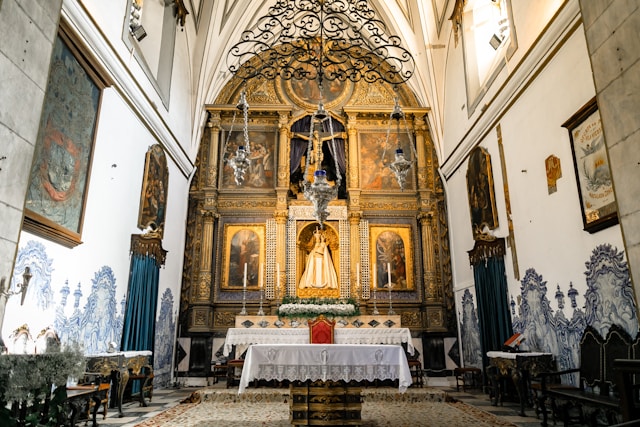
The Church of Jesus Christ: A Comprehensive Guide
Introduction
The Church of Jesus Christ of Latter-day Saints, often referred to as the LDS Church or Mormon Church, is a Christian restorationist church founded by Joseph Smith Jr. in 1830 in Fayette, New York. The church claims to be the only true and authorized church on the earth and upholds the Bible as the word of God, as well as additional scriptures such as the Book of Mormon, Doctrine and Covenants, and Pearl of Great Price.
The LDS Church has over 16 million members worldwide and is headquartered in Salt Lake City, Utah. The church is known for its emphasis on family values, missionary work, and its unique beliefs and practices, which have often sparked controversy.
Beliefs and Practices
Core Beliefs
- God is the Eternal Father of all spirits and the creator of all things.
- Jesus Christ is the Savior and Redeemer of the world, who came to earth to atone for the sins of mankind.
- The Holy Ghost is the third member of the Godhead, who bears witness of truth and guides individuals.
- All humans are children of God, with a divine nature and eternal potential.
- Salvation is obtained through faith in Jesus Christ, repentance, baptism, and receiving the gift of the Holy Ghost.
- Families are eternal and can be sealed together for time and eternity through the sealing ordinance performed in LDS temples.
- The Book of Mormon is a divinely inspired record of ancient prophets in the Americas and bears witness of Jesus Christ.
Practices
- Baptism: At age 8, members of the LDS Church undergo baptism by immersion for the remission of sins.
- Sacrament: The sacrament, consisting of bread and water, is taken weekly by members of the LDS Church as a reminder of Jesus Christ’s sacrifice.
- Missionary Work: Young men and women serve two-year missions throughout the world to preach the gospel and provide service.
- Temple Worship: LDS temples are considered the most sacred places on earth and are used for ordinances such as marriage, baptisms for the dead, and endowment ceremonies.
- Tithing: Members of the LDS Church are expected to pay 10% of their income as tithing to support the church’s operations and humanitarian efforts.
Organization and Governance
The LDS Church is governed by a three-tiered priesthood system:
- Melchizedek Priesthood: This priesthood is responsible for spiritual guidance, administering ordinances, and presiding over the church.
- Aaronic Priesthood: This priesthood is responsible for performing ordinances such as baptism and passing the sacrament.
- Patriarchal Priesthood: This priesthood is responsible for giving blessings to members of the church.
The church is led by a First Presidency, consisting of a president, two counselors, and a Quorum of the Twelve Apostles, who together form the highest governing body of the church.
Controversies
The LDS Church has faced controversies throughout its history, including:
- Polygamy: The church practiced polygamy from its early days until 1890, when it officially renounced the practice under pressure from the U.S. government.
- Racism: The church’s previous prohibition on black men holding the priesthood and participating in temple ordinances was discontinued in 1978.
- LGBTQ+ Issues: The LDS Church considers same-sex marriage a sin and does not allow same-sex couples to join the church or participate in temple ordinances.
Conclusion
The Church of Jesus Christ of Latter-day Saints is a complex and multifaceted organization with a unique set of beliefs and practices. It has faced controversy throughout its history but remains a significant force in the Christian world. Understanding the LDS Church’s beliefs, practices, and controversies is essential for anyone seeking a comprehensive view of religious diversity.

Unveiling Saint Peter’s Basilica: An Architectural Masterpiece and Sacred Site
Introduction
Nestled in the heart of Vatican City, Saint Peter’s Basilica stands as a magnificent architectural marvel and a sacred pilgrimage site for millions of Catholics worldwide. Designed by the legendary Renaissance architects Donato Bramante, Michelangelo, Carlo Maderno, and Gian Lorenzo Bernini, this basilica is an epitome of ecclesiastical art and grandeur.
History and Construction
Early Basilica
The history of Saint Peter’s Basilica traces back to the 4th century AD when Emperor Constantine I commissioned the construction of a basilica over the traditional burial site of Saint Peter, the first Pope. Dedicated in 326 AD, this early basilica served as a sacred space for centuries.
Renaissance Reconstruction
By the 15th century, the original basilica was in dire need of repairs. In 1506, Pope Julius II initiated an ambitious reconstruction project, entrusting Bramante with the task of designing a new basilica. Bramante envisioned a centrally planned structure, inspired by the Pantheon.
Michelangelo’s Contributions
After Bramante’s death in 1514, Michelangelo took over the project. He revised Bramante’s concept, creating a design with a vast dome and a Latin cross plan. Michelangelo’s dome remains a defining feature of the basilica and is one of the largest and most iconic domes in the world.
Later Additions
In the 1600s, Carlo Maderno extended the basilica’s nave and added a grand façade. Gian Lorenzo Bernini designed the majestic colonnade that frames Saint Peter’s Square, creating an awe-inspiring approach to the basilica.
Architectural Highlights
Facade
The imposing façade of Saint Peter’s Basilica is 114 meters wide and 45 meters high. It features a central portico flanked by two bell towers and crowned by a balustrade with statues of Christ and the apostles.
Nave and Transepts
The immense nave, measuring 186 meters long and 27 meters wide, is supported by massive pillars and decorated with frescoes, mosaics, and sculptures. The transepts, which extend from the sides of the nave, create a vast cross-shaped floor plan.
Dome
The dome of Saint Peter’s Basilica is a architectural marvel. Soaring to a height of 138 meters, its double shell design provides both structural stability and a magnificent interior. The interior is adorned with shimmering mosaics depicting biblical scenes and saints.
Apse
The apse, located at the eastern end of the basilica, is the most sacred space. It houses the Chair of Saint Peter, a relic believed to have been used by the first Pope.
Art and Interiors
Sculptures
Saint Peter’s Basilica is home to an impressive collection of sculptures. Notable works include Michelangelo’s “Pietà” and Bernini’s “Apollo and Daphne” and “Ecstasy of Saint Teresa.”
Mosaics
The basilica’s interior is adorned with thousands of square meters of intricate mosaics. These mosaics depict biblical scenes, religious figures, and architectural motifs, creating a vibrant and awe-inspiring atmosphere.
Paintings
The basilica also houses a number of important paintings, including works by Caravaggio, Raphael, and Guido Reni.
Pilgrimage and Significance
Saint Peter’s Basilica is a major pilgrimage site for Catholics worldwide. Devotees come from far and wide to visit the tomb of Saint Peter and to experience the sacred atmosphere of this magnificent basilica.
Visiting Saint Peter’s Basilica
Practical Information
– The basilica is open daily for visitors.
– Entry to the basilica is free of charge.
– Dress code is required (no shorts or sleeveless tops).
– Guided tours are available.
– The climb to the dome is well worth the effort for panoramic views of Rome.Tips for Visitors
– Arrive early to avoid crowds, especially during peak season.
– Allow ample time to explore the basilica and its many chapels.
– Take advantage of the audio guides to learn more about the history and art of the basilica.
– Consider visiting during special events, such as papal Masses or canonizations.Conclusion
Saint Peter’s Basilica stands as a testament to the enduring power of faith, artistic genius, and architectural innovation. Whether you are a devout pilgrim or an art enthusiast, a visit to this magnificent basilica is an unforgettable experience that will leave a lasting impression.

Missionary: Selfless Service and Spiritual Fulfillment
Who is a Missionary?
A missionary is an individual who travels to a foreign country or region with the primary purpose of sharing their religious beliefs, engaging in charitable work, or promoting social change.
Types of Missionaries
- Religious Missionaries: Sent by religious organizations to propagate their faith through preaching, teaching, or establishing new churches.
- Secular Missionaries: Focus on providing humanitarian aid, community development, education, or medical assistance in underserved areas.
- Cultural Missionaries: Aim to promote cross-cultural exchange and foster understanding between different cultures.
Qualities of a Missionary
- Deep faith and commitment to their mission
- Cultural sensitivity and adaptability
- Strong communication skills and a desire to connect with people
- Patience, perseverance, and resilience
- Compassion and empathy
Missionary Work
Missionary work can involve a wide range of activities, such as:
- Preaching and teaching religious doctrines
- Establishing churches or religious communities
- Providing humanitarian aid, such as food, water, and shelter
- Building schools, clinics, and other infrastructure
- Working with local communities to promote education, health, and development
Benefits of Missionary Service
- Spiritual Growth: Immersion in a new culture and working with different people can deepen one’s faith and spirituality.
- Cultural Exchange: Missionaries learn about and contribute to the understanding of different cultures, fostering global awareness.
- Personal Transformation: The challenges and rewards of missionary work can lead to significant personal growth and self-discovery.
- Making a Difference: Missionaries have the opportunity to make a tangible contribution to the lives of others and work towards a more compassionate and just society.
Challenges of Missionary Service
- Cultural Barriers: Missionaries may face language barriers, cultural differences, and misunderstandings.
- Safety Risks: Working in foreign countries can expose missionaries to political instability, crime, or natural disasters.
- Emotional and Psychological Stress: Being away from family and friends, witnessing suffering, and dealing with different cultural norms can take an emotional toll.
- Identity Crisis: Missionaries may struggle to maintain their own cultural identity while immersed in a new culture.
Tips for Aspiring Missionaries
- Prepare Thoroughly: Learn about the culture and language of the region where you plan to serve. Study history, religion, and local customs.
- Get Connected: Join a missionary organization, attend training programs, and develop a network of support before departure.
- Cultivate Cultural Sensitivity: Be respectful of local beliefs, values, and practices. Learn from the people you encounter and avoid judgment.
- Learn the Language: Gaining fluency in the local language is essential for effective communication and building relationships.
- Be Prepared for Challenges: Anticipate cultural barriers, safety risks, and emotional challenges. Develop coping mechanisms and seek support from others.
Historical Impact of Missionaries
Missionaries have played a significant role in shaping history through:
- Religious Expansion: Missionaries have helped spread major world religions, such as Christianity, Islam, and Buddhism.
- Cultural Exchange: They have facilitated the exchange of ideas, technologies, and cultural practices between different regions.
- Social Progress: Many missionaries have established schools, hospitals, and orphanages, contributing to education, healthcare, and social welfare.
- Political Influence: Missionaries have sometimes been used by governments to exert political influence or control over territories.
Conclusion
Being a missionary is a calling that requires deep faith, cultural sensitivity, and a commitment to serving others. It offers profound opportunities for spiritual growth, cultural exchange, and personal transformation. While there are challenges associated with missionary work, the rewards and impact on both the missionary and the communities they serve can be immeasurable.
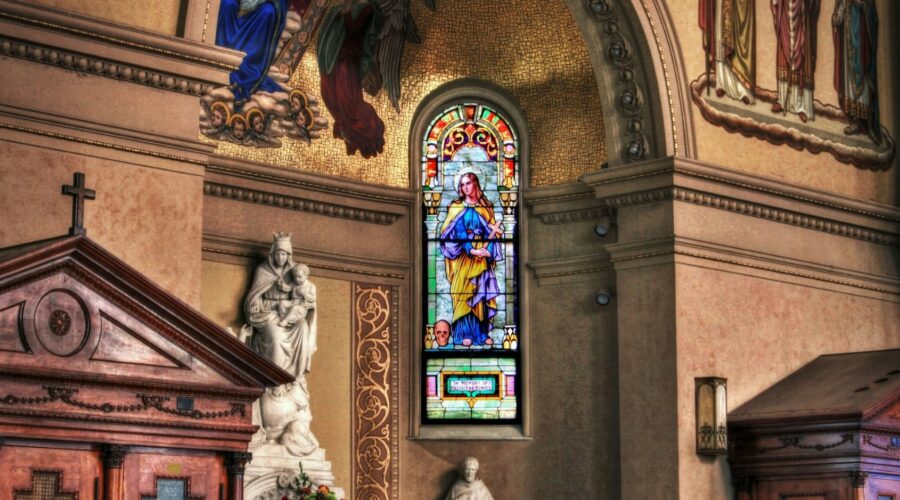
The Church of God: An In-Depth Exploration
Introduction
The Church of God is a Christian denomination with a rich history and a worldwide presence. With a focus on the Bible as the sole authority in matters of faith and practice, the Church of God has played a significant role in spreading the gospel and fostering spiritual growth.
Core Beliefs and Practices
Beliefs
- The Trinity: God the Father, God the Son (Jesus Christ), and God the Holy Spirit
- The deity of Christ and His virgin birth
- The inerrancy of Scripture
- Water baptism by immersion
- The Lord’s Supper as a memorial
- Premillennialism (the Second Coming of Christ will occur before the Millennium)
Practices
- Weekly worship services, including preaching, singing, and prayer
- Sunday Schools and Bible studies for all ages
- Missions and outreach programs
- Lay leadership
History and Expansion
The Church of God traces its roots to the early 19th century in the United States. In 1886, a group of holiness believers led by A.J. Tomlinson merged to form the Church of God. Over the years, the church experienced rapid growth and established congregations in various parts of the world.
Global Impact
Today, the Church of God has a presence in over 190 countries with millions of members. It is involved in a wide range of ministries, including:
- Education: operating schools, colleges, and seminaries worldwide
- Healthcare: providing medical clinics, hospitals, and disaster relief
- Orphanages and feeding programs
- Media: producing radio and television programs, books, and online resources
Leadership and Structure
The Church of God is governed by a General Assembly, which meets every four years to elect a General Overseer and other leaders. Each local congregation is led by a pastor, who is responsible for the spiritual well-being of the members.
Diversity and Inclusivity
While the Church of God has a unified set of beliefs and practices, it embraces diversity in its membership. Congregations vary in size, culture, and worship styles, catering to the needs of different communities.
Membership
Individuals who are seeking a closer relationship with God and who believe in the Church of God’s core beliefs are welcome to become members. Membership involves a process of personal commitment, baptism, and discipleship training.
Resources and Support
The Church of God offers a range of resources and support to its members and the wider community:
- Literature: Bible commentaries, devotional books, and theological journals
- Counseling and support services
- Prayer resources and intercessory prayer teams
- Online platforms for Bible study, fellowship, and resource sharing
Conclusion
The Church of God is a vibrant and growing Christian denomination that is committed to sharing the gospel, promoting spiritual growth, and serving the needs of its members and the wider community. With a strong emphasis on Scripture, lay leadership, and global outreach, the Church of God continues to make a significant impact in the world.
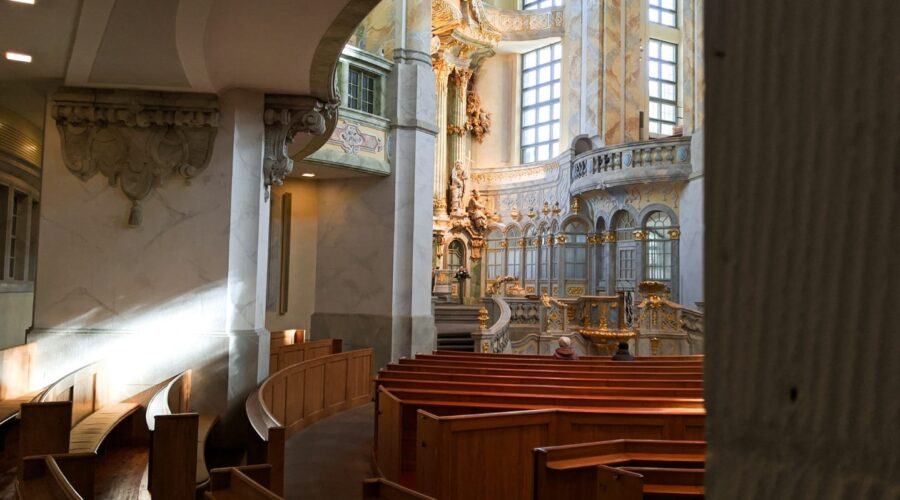
Discover Crossings Church: A Welcoming Community for Spiritual Growth and Connection
Are you seeking a vibrant and welcoming church community where you can grow in your faith and connect with others?
About Crossings Church
Crossings Church is a non-denominational Christian church with multiple locations across the United States. Founded on the principles of love, grace, and acceptance, Crossings Church is known for its warm and inviting atmosphere, engaging sermons, and diverse ministries that cater to people from all walks of life.
Core Beliefs
Crossings Church holds to the following core beliefs:
- God is the creator and sustainer of all things.
- The Bible is the inspired and authoritative Word of God.
- Jesus Christ is the only way to salvation.
- The Holy Spirit empowers believers to live Christ-centered lives.
- The Church is the body of Christ on earth.
Services and Ministries
Crossings Church offers a wide range of services and ministries to meet the needs of its congregants:
Worship Services
- Contemporary and traditional worship services with live music.
- Thought-provoking and relevant sermons.
- Prayer, communion, and baptism.
Small Groups
- Connect with others through Bible studies, prayer groups, and community outreach programs.
- Foster meaningful relationships and grow in your faith.
Ministries for All Ages
- Children’s programs with age-appropriate teaching and activities.
- Youth groups for teens and young adults.
- Ministries for college students, singles, married couples, and seniors.
Community Outreach
- Serve your community through volunteer opportunities and social justice initiatives.
- Make a difference in the lives of others while sharing the love of Christ.
Locations and Contact Information
For locations and contact information of Crossings Church near you, please visit their website at https://crossings.church.
Benefits of Attending Crossings Church
Joining Crossings Church offers numerous benefits:
Spiritual Growth
- Develop a deeper understanding of the Bible and your faith.
- Connect with God through worship, prayer, and community.
Community and Connection
- Build lasting relationships with like-minded individuals.
- Experience a sense of belonging and support.
Opportunities for Service
- Serve your community and make a positive impact.
- Discover your gifts and use them to bless others.
How to Get Involved
Getting involved with Crossings Church is easy:
Visit a Service
Attend a worship service to experience the church’s atmosphere and hear a sermon.
Connect with a Small Group
Join a small group to connect with others and grow in your faith.
Get Involved in Ministries
Discover the various ministries and volunteer opportunities available to serve your community.
Testimonials
“Crossings Church is truly a home away from home. The community is so welcoming and supportive, and I always feel uplifted and encouraged after attending services.” – Sarah
“I have grown so much in my faith since joining Crossings Church. The sermons are always thought-provoking and the small group discussions have helped me deepen my understanding of the Bible.” – John
“Crossings Church has made such a difference in my life. Through volunteer opportunities, I have been able to make a positive impact in my community and share the love of Christ with others.” – Mary
Conclusion
Crossings Church is a thriving and welcoming community that offers opportunities for spiritual growth, connection, and service. Whether you are new to faith or seeking a deeper connection with God, Crossings Church has something for you. Visit their website, attend a service, and discover the transformative power of a Christ-centered community.